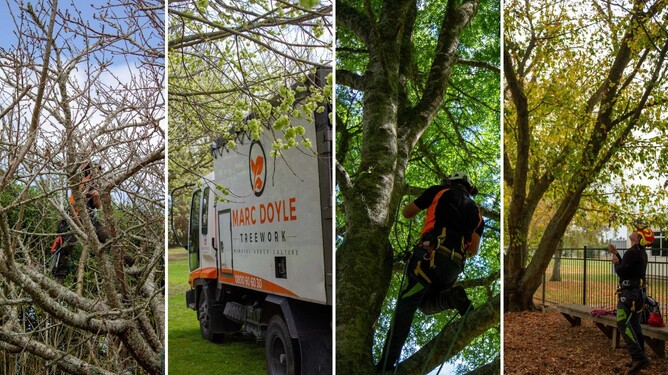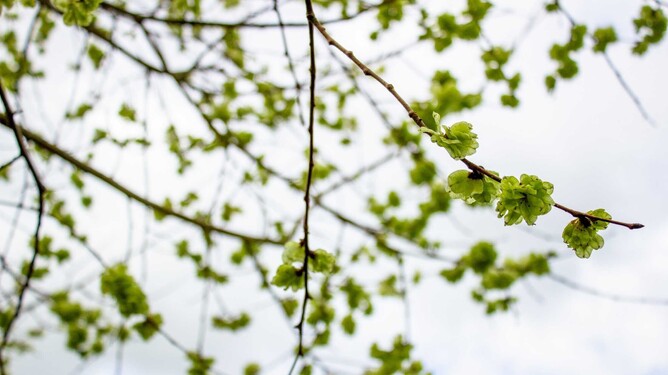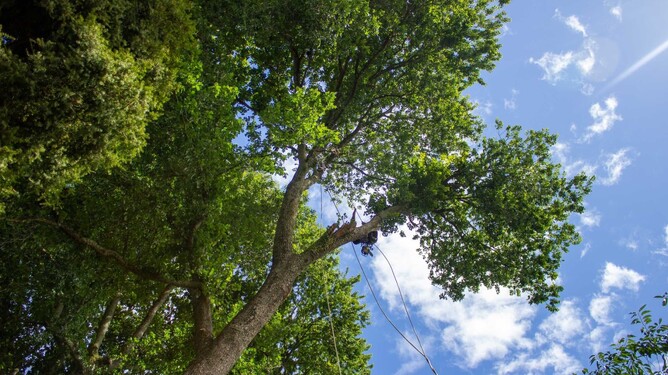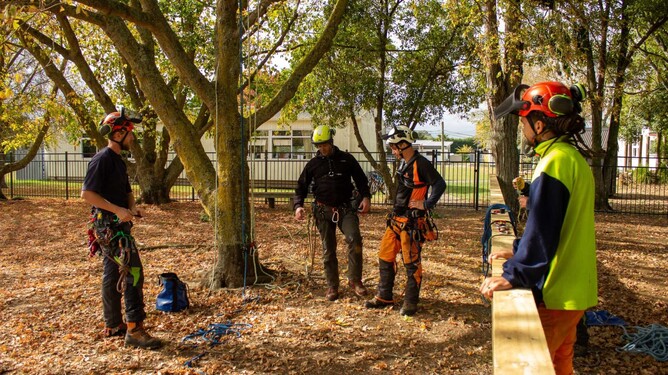Trees respond to environmental changes all year, whether it’s colour changes or leaves dropping on the ground.
One of the most common changes is a tree leaf transforming during autumn. But why do some tree leaves change colour and others don’t?
Like pine or conifers, evergreen trees retain their foliage all year round. On the other hand, deciduous trees shed their leaves seasonally.
Although, it’s important to note that trees don’t only change with autumn and winter, but all year long.
Spring
Spring is synonymous with new growth. It’s a great time of the year because the sun is out longer and the days start to be warmer. When trees detect the temperature rise, buds and leaves slowly begin growing.
Did you know that all trees generate energy from sunlight through photosynthesis? They produce chlorophyll, a green pigment that absorbs light.
The light absorbed turns into the energy that feeds the trees. Next, they will use that stored energy to convert carbon dioxide and water into glucose. Finally, trees and plants will grow new leaves and other parts with the glucose and nutrients taken from the soil.
Summer
During the summer, trees continue producing chlorophyll, which gives the leaf its green colour.
Although, when the temperatures climb too high, the tree’s ability to photosynthesis slows down. It does it for a good reason, to protect itself and save as much energy.
Additionally, the low level of precipitations and soil moisture means that a tree will conserve more energy and resources to survive.
Autumn
Autumn can be the year's favourite season for many people because deciduous trees change colour.
The cooler temperatures and shorters days influence deciduous trees. First, they stop producing chlorophyll because they don’t have enough energy. When producing less chlorophyll, the trees' green pigment starts to fade, and other pigments hiding underneath slowly emerge.
The yellow, orange or red colours become more visible. These colours are always present in the leaves, but in summer, green dominates because it’s the most efficient colour for photosynthesis.
Evergreen trees, like pines or coniferous trees, don’t lose their leaves like deciduous trees. Instead, they gradually lose them but in smaller quantities.
The most common evergreen native trees found in New Zealand are:
- Kauri
- Bottlebrush
- Camellia
- Rimu
- Pine
- Pohutukawa
- Totara
- Pittosporum
- Kowhai
Winter
Winter in New Zealand is very different from North and South Island. South Island will have more snow and cold winters than the North Island. Although, both islands will experience leaf loss like many other parts of the world.
Deciduous trees will eventually lose their leaves because they pull the nutrients out of the leaves and conserve resources. Therefore, the trunk and branches will go into hibernation and preserve as much energy as possible.
When the leaves drop on the soil, they slowly decompose back into the ground, thus creating rich soil full of nutrients that will support new life in the spring. So even though the trees are hibernating during winter and seem not to do anything, nothing is wasted, and the life cycle continues all year.






